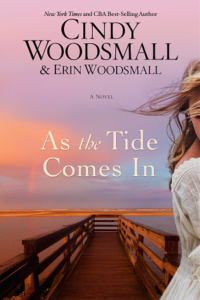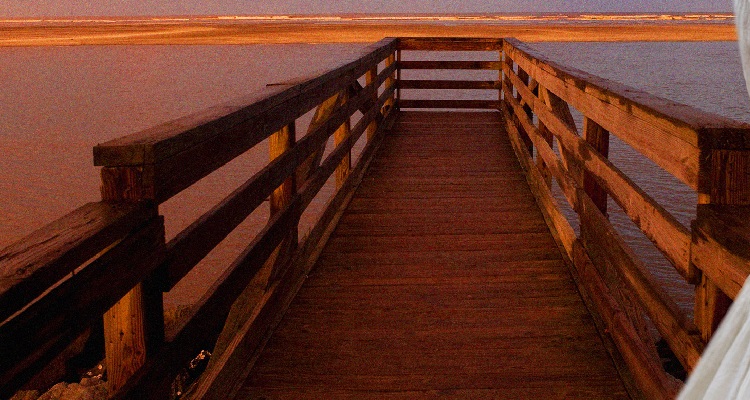Cindy, how does the process of co-writing compare to writing your own novels? (Are there pros and cons?)
 Cindy: The pros are almost too many to list, so I’ll list my top favs:
Cindy: The pros are almost too many to list, so I’ll list my top favs:
- I love that my daughter-in-law is helping me brainstorm the overall story ideas and then we travel together to do the research.
- After step one, my creative energy is likely to start pouring forth more ideas than I can sort out. She makes time in her busy week—three children with number four due in October and a homeschooling mom—to meet and talk it out. She’s great at typing up notes while I “vent” my story thoughts. That has been a huge blessing.
- She’s very thoughtful and careful about what we need to do next so that I feel motivated and excited about writing. I love writing, but there are many components to being an author that constantly pull us away from the thing we long to do—WRITE!
- If my creative energy is low, she often has really good instincts of what’s going on and good suggestions for overcoming it. Five) I get a lot from our blending of perspectives of older and younger viewpoints. It helps me continue to develop new, fresh characters.
There is one con—finding a computer program that meets our needs when coauthoring a piece. When I was writing solo, I saved the master files on my desktop, and I didn’t have to worry about accidentally overwriting them or updating the wrong file. I had a system and it worked well.
But collaborating has forced us to search for a computer program that syncs quickly. Without being specific we’ve tried many programs that should meet our work needs, but they don’t. A partial solution to this problem is using Google Docs. If I use Google Docs to change the age of a character or a date on the timeline, Erin can immediately see it and make adjustments in her story writing.
But it doesn’t work well for the novel itself, just the auxiliary documents—timeline, chapter-by-chapter outline, research, character charts, and synopses. The auxiliary documents keep all factual information straight for forward movement on the story. Those pieces are turned over to the editors when we turn in the manuscript.
One wrong piece of information—a date in the timeline, birthdate or eye color of a character, distance between a home and a barn or neighbor, type of entryway into the characters’ homes—will come back to haunt the authors and editors during the editing rounds, so keeping the documents updated and correct is vital.
As far as the novel itself, when Erin or I finish a chapter on our computers, we copy and paste that chapter into Google Docs. When we’re finished honing it together in Google Docs, I copy it and move it to the master file on my desktop.
Erin, what were your experiences that led up to this novel?
 Erin: Growing up I spent a lot of time on St. Simons Island. Both of my parents are from the Brunswick/Golden Isles area of Georgia. We went there at least once a year and many years we visited three or more times.
Erin: Growing up I spent a lot of time on St. Simons Island. Both of my parents are from the Brunswick/Golden Isles area of Georgia. We went there at least once a year and many years we visited three or more times.
St. Simons Island is a wonderful place to visit. My mom has an adventurous heart, and she’d take me “off the beaten path” year after year. Similar to what Tara and the Glynn Girls eventually do in the book, I biked all over St. Simons countless times. I didn’t always realize it, but during every trip I was learning about the island’s unique ecosystem and rich history.
I’ve lived in North Georgia my whole life. While movies like Steel Magnolias and Sweet Home Alabama—which As the Tide Comes In has been compared to—are an embellishment of southern living, I’ve met many unique Southern people who are sincere, charming, and quirky, similar to the Glynn Girls.
I was a choir director for a small Methodist church for about five years, and saw firsthand that there are big, vibrant personalities in little towns all across the South. While none of the Glynn Girls have direct inspirations, I was able to draw upon a lifetime of experiences in small Georgia towns.
What literary or storytelling influences did you bring to the table?
 Erin: As far as storytelling influences, I think the biggest one is obvious: Cindy. She has an amazing instinct for story, plot, and for which elements work and which don’t.
Erin: As far as storytelling influences, I think the biggest one is obvious: Cindy. She has an amazing instinct for story, plot, and for which elements work and which don’t.
I still have so much to learn, but thankfully she’s patient! It’s been a beautiful journey that brought us to begin writing together, and I’m just so thankful to find a kindred spirit in her.
Because our stories are contemporary, I can also bring some insight to the table concerning the younger characters. Tara is very close to my age, and she has some of the same interests I have, like running, hiking, and loving outdoor adventures.
It’s obvious that Cindy doesn’t need my help writing realistic characters in their twenties or thirties because she’s been doing it for over a decade. But it’s nice to be able to open my life of real experiences to her as we’re creating new characters in a culture outside of Amish life. In our more recent writing of non-Amish settings, I bring things to the table she hasn’t personally experienced in the same way she experienced the Plain lifestyle.
Most of the book takes place on St. Simons Island, Georgia. Why did you select this location, and what did you learn from research trips there that helped shape the story?
Erin: When Cindy had the idea for this novel, originally it was going to be set in a town similar to our hometown, which is a suburb of Atlanta located on Lake Lanier. But she’d been unable to find a setting that felt truly right.
When she told me the storyline was inspired by Sidney Lanier’s poem, I immediately thought of Glynn County, Georgia, which includes Saint Simons Island, because Sydney Lanier wrote the poem while there. I mentioned that information to her, and everything clicked into place.
The whole area has a small-town feel, and it seems as if everyone knows everyone going generations back. My parents grew up in Glynn County, and I spent my childhood visiting grandparents and roaming St. Simons.
Cindy: I was so excited about the setting being St. Simons Island, and we planned a weeklong research trip to St. Simons Island. We stayed in a lovely old home on East Beach, and that house became a central focal point of the story.
Because Erin had family in St. Simons, we were able to interview friends of the family that covered several generations of unique lives. Between our time there and Erin’s familial connection, we were able to create a story that stays true to the island’s culture and history.
A few of the things we did while there were climb all 129 steps of the lighthouse and spend a lovely afternoon at Gould’s Inlet, which became the book’s cover. We also went on a historical “ghost tour,” although I doubt if anyone believes the ghost part of the story.
But the stories are a part of the island culture and a way to pass down the island’s history from one generation to the next, because everything up to the point of the person dying and becoming a ghost is well-documented history.
NEXT PAGE: Find out what inspired the story–and the characters–in the novel! Click through to continue…


